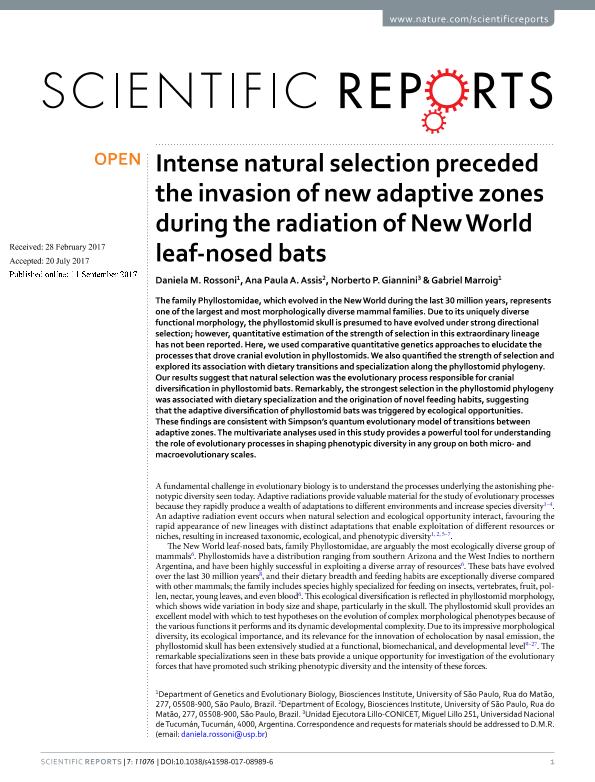Artículo
Intense natural selection preceded the invasion of new adaptive zones during the radiation of New World leaf-nosed bats
Fecha de publicación:
12/2017
Editorial:
Nature Publishing Group
Revista:
Scientific Reports
ISSN:
2045-2322
Idioma:
Inglés
Tipo de recurso:
Artículo publicado
Clasificación temática:
Resumen
The family Phyllostomidae, which evolved in the New World during the last 30 million years, represents one of the largest and most morphologically diverse mammal families. Due to its uniquely diverse functional morphology, the phyllostomid skull is presumed to have evolved under strong directional selection; however, quantitative estimation of the strength of selection in this extraordinary lineage has not been reported. Here, we used comparative quantitative genetics approaches to elucidate the processes that drove cranial evolution in phyllostomids. We also quantified the strength of selection and explored its association with dietary transitions and specialization along the phyllostomid phylogeny. Our results suggest that natural selection was the evolutionary process responsible for cranial diversification in phyllostomid bats. Remarkably, the strongest selection in the phyllostomid phylogeny was associated with dietary specialization and the origination of novel feeding habits, suggesting that the adaptive diversification of phyllostomid bats was triggered by ecological opportunities. These findings are consistent with Simpson's quantum evolutionary model of transitions between adaptive zones. The multivariate analyses used in this study provides a powerful tool for understanding the role of evolutionary processes in shaping phenotypic diversity in any group on both micro- and macroevolutionary scales.
Archivos asociados
Licencia
Identificadores
Colecciones
Articulos(UEL)
Articulos de UNIDAD EJECUTORA LILLO
Articulos de UNIDAD EJECUTORA LILLO
Citación
Rossoni, Daniela M.; Assis, Ana Paula A.; Giannini, Norberto Pedro; Marroig, Gabriel; Intense natural selection preceded the invasion of new adaptive zones during the radiation of New World leaf-nosed bats; Nature Publishing Group; Scientific Reports; 7; 1; 12-2017; 1-11
Compartir
Altmétricas




